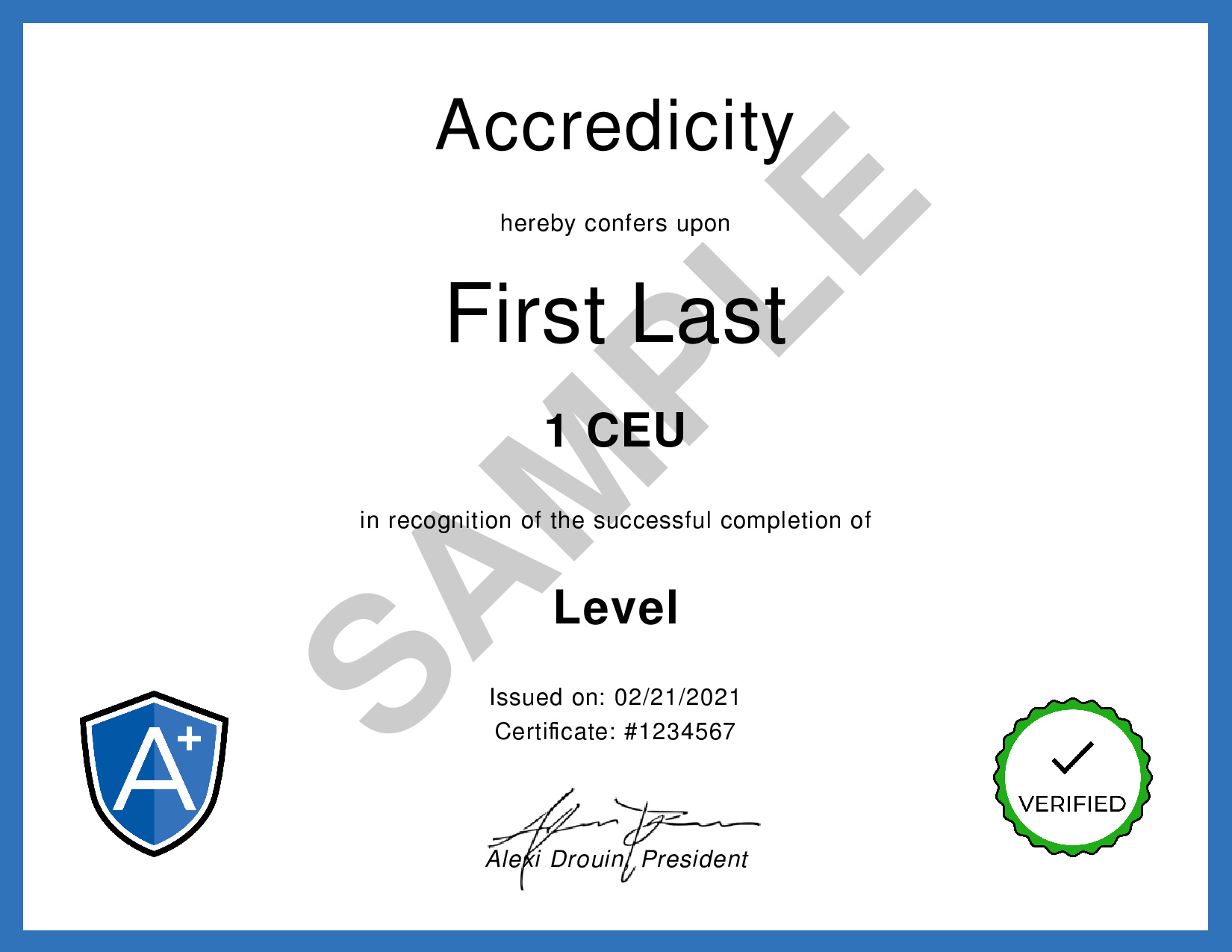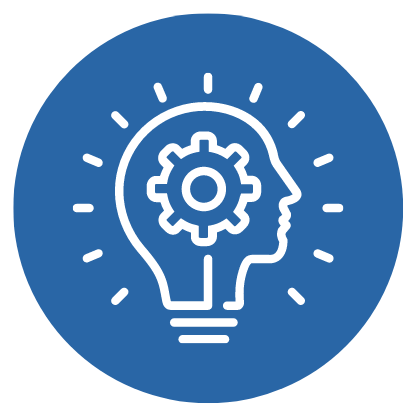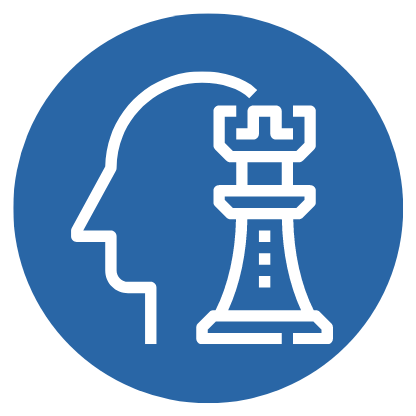The Explainer: What Is Design Thinking? | HBR
Reference: Harvard Business Review. (2019, July 23). The Explainer: What Is Design Thinking? [Video]. YouTube.
We Make Your Education Count

Get the Credit You Deserve and Become the Most Attractive Job Candidate by Earning and Posting A+ Badges to Your Linkedin Profile.
Sign Up to Get Started at Accredicity
|
Discover how design thinking can revolutionize strategy-making and unlock new markets. Design Thinking, popularized by David M. Kelley and Tim Brown of IDEO and Roger Martin of the Rotman School, is a strategy-making process that can help companies unlock new markets and identify new strategies, according to Harvard Business Review. It sets strategy by applying tools from the world of design and focusing on human behavior instead of backward-looking data or risky bets based on instinct. Design Thinking has three stages: invent a future, test ideas out, and bring the new product or service to life. For example, Procter & Gamble used Design Thinking to turn around the skin care brand Oil of Olay by observing shoppers, creating new formulations, and testing different prototypes, price points, and store displays. Learning Outline1. Formulate theories about what customers might want by immersing yourself in their lives instead of asking them about specific products/services. Instructional ContentDesign thinking is a powerful strategy-making process that can help companies avoid costly mistakes. This innovative approach to problem solving shifts the focus to human behavior and applies tools from the world of design. Popularized by David M. Kelley, Tim Brown of IDEO and Roger Martin of the Rotman School, design thinking has three major stages: inventing a future, testing ideas out, and bringing a product or service to life. The first step involves immersing yourself in the lives of customers to form theories about what they might want but don't have. Instead of polling them about specific products or services, observe their behavior and ask questions. The second step is to use iterative prototyping and experimentation to test out different products, pricing, and positioning. Finally, when you've got a winner, identify the activities, capabilities, and resources your company will need to produce, distribute, and sell it. A good example of this is Procter & Gamble's turnaround of the skin care brand Oil of Olay. By observing shoppers in both mass retail channels and high-end department stores, they realized that their industry had been mainly targeting older women worried about wrinkles. This sparked the idea for a series of new premium, yet broadly distributed products which were well-received by a wide range of consumers. Design thinking is a valuable method for companies to unlock new markets and strategies. By applying creative problem solving to observe and understand customer behavior, companies can develop innovative products and services that meet their needs. This approach can provide a competitive advantage and help companies stay ahead of the curve. Leadership
|

Design thinking is like a detective game: it helps companies figure out what customers want without asking them directly. Designers use tools from the world of design to observe people and their behavior and try out ideas on them to see what works. It's like playing with clay - you make something and then you change it until it's perfect for the customer. For example, Procter & Gamble used design thinking to develop a new skin care product line that was a hit with different age groups. Design thinking is a great way to unlock new markets and develop strategies that really work! Video Quotes"Form a few theories about what customers might want, but don't have by immersing yourself in their lives." - David M. Kelley and Tim Brown of IDEO "Use iterative prototyping with good enough products or services, and conduct a few quick experiments to see how consumers respond." - Roger Martin of the Rotman School "By using imaginative, human-centered problem solving, design thinking can help you unlock new markets and identify new strategies." - David M. Kelley and Tim Brown of IDEO Related Quotes"Design thinking is a creative problem-solving process focused on user needs." - Dr. Barry Katz, Professor and Design Thinking Expert "At its core, design thinking is about understanding the people you're designing for and creating solutions that are tailored to their needs." - Dr. Barry Katz, Professor and Design Thinking Expert "Design thinking is really a process of continual iteration, where you constantly evaluate and refine your ideas." - Dr. Barry Katz, Professor and Design Thinking Expert Competencies1. Creativity and Innovation Learning Outcomes1. Understand: Explain the three major stages of design thinking (inventing a future, testing ideas, and bringing products to life). Sample Answers1. Design thinking is a strategy-making process that utilizes tools from the world of design to shift the focus onto human behavior. It involves three stages: inventing a future, testing ideas, and bringing a product or service to life. 2. An example of successful design thinking was Procter & Gamble's turnaround of the skin care brand Oil of Olay. The company observed shoppers in different stores and identified a large market to be captured, experimented with new formulations, and tested different prototypes, price points, and store displays. 3. Design thinking allows companies to make decisions based on evidence rather than backward-looking data or instinct. It also helps them unlock new markets and identify new strategies by utilizing imaginative, human-centered problem solving. Harvard Business ReviewHarvard Business Review is a global leader in advanced management thinking. Founded in 1922, it is the preeminent source of cutting-edge research, analysis, and insights for business leaders worldwide. Its mission is to improve the practice of management in a changing world. Harvard Business Review is associated with Harvard Business School, one of the world's leading sources of business knowledge and education. Harvard Business Review is uniquely positioned to provide expertise on What Is Design Thinking as it is a field that has been studied, discussed, and written about by the world's leading business minds for decades. Learning DesignCreativity and Innovation: This competency is essential for leadership as it allows leaders to think outside the box and develop new ideas, processes, and solutions. It is also important for leaders to be able to take risks and try new things. A framework students can use to help build this competency is the Design Thinking process, which helps to break down complex problems into more manageable tasks. Through this process, students will learn how to ask the right questions, come up with new ideas, and create solutions. Strategic Thinking: Strategic thinking is an important competency for leaders as it allows them to make informed decisions and develop long-term plans. It is important for leaders to be able to think critically and analyze data in order to make the best decisions. A framework students can use to help build this competency is the SWOT Analysis which helps to identify strengths, weaknesses, opportunities, and threats. Through this process, students will learn how to assess a situation and make decisions based on the available data. Customer Service: Customer service is an important competency for leaders as it enables them to understand their customers better and build relationships. It is important for leaders to be able to listen to customer needs and provide solutions. A framework students can use to help build this competency is the SERVQUAL model, which helps to identify customer needs and expectations. Through this process, students will learn how to assess customer needs and provide solutions that are tailored to their needs. AssessmentQ. What is the purpose of design thinking? Answer: C. To apply tools from the world of design to shift the focus to human behavior QuestionsCommon Hypothetical Questions: Real-Life Examples and Scenarios Questions: KeywordsDesign Thinking, Human-Centered Problem Solving, Oil of Olay, Future Customer Wants, Prototyping Iterative Experiments Facts1. Design thinking is a strategy-making process that shifts the focus to human behavior. Trends1. Create an infographic or data visualization to illustrate the different stages of design thinking and how they can help companies innovate. SourceThis learning instructional guidance was formulated using the GPT-3 language model created by OpenAI. ShareUnlock new markets & develop innovative strategies: Design Thinking! Observe customer behavior, iterate prototyping, and experiment to understand customer wants. #InnovativeStrategy #DesignThinking #CustomerFocus #Observation #Experimentation 😊 @Accredicity |








 154 Creds - Leadership
154 Creds - Leadership



